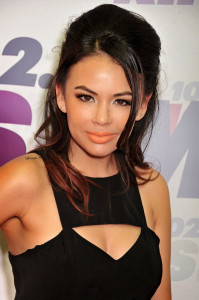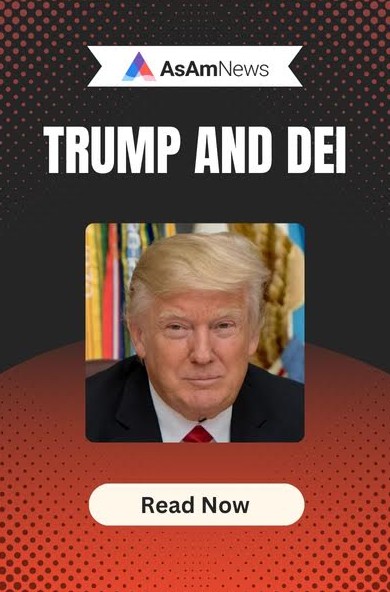By Laylita Day
There has been a lot of criticism surrounding the casting of Emma Stone as the multiracial character in the movie Aloha. Emma Stone has no Asian or Pacific Islander heritage while the character she plays, Allison Ng is said to be part Hawaiian and Chinese as well as Swedish. Being a multiracial person myself, I completely agree that an actual multiracial actress should have played the part. As many other articles on the issue have pointed out, there are plenty of actresses who fit the character’s heritage better. One problem with this though is that the majority of these actresses either look mostly Asian or distinctly mixed.
Why is this a problem? Not because there are not enough Asians in the media. In this case, it is a problem because of how the character in the story was supposed to be portrayed. According to the comment Cameron Crowe gave, the character of Allison Ng was supposed to be frustrated by her white appearance and always having to over-explain her heritage. This character was also supposed to be based on a real-life red-headed woman living in Hawaii. Thus in this case, the character of Allison Ng was supposed to be an invisible hapa, which is what I myself am.
Hapa, according to Alex Laughlin’s NPR article, “is a Hawaiian pidgin word used to describe mixed-race people — primarily, though not exclusively, those who are half white and half Asian. It’s short for hapalua, the Hawaiian word that literally means “half” — and it originated as a derogatory term toward mixed-race children of plantation guest workers from the Philippines, Korea, China and Japan, and the women they married in Hawaii in the early part of the 20th century.”
While I agree that Cameron Crowe made a whitewashing mess of the movie, the basic underlying story of someone who is part white, Chinese and Hawaiian but only looks white and thus deals with issues concerning this fact is something that I and many other invisible hapas can relate to. In fact, it is something that I wish was discussed more. Being a hapa in itself can lead to identity issues with people constantly asking “What are you?” such as Laughlin wrote about in her NPR article. Being an invisible hapa though has its own set of issues.
In my case, I am half white and half Taiwanese, but I do not look like it. I have pale skin, brown hair and eyes, am double-lidded and have a pointy Caucasian nose. I have never met anyone who thought I looked Asian. I have had plenty of people say, “Oh yeah, you do look kind of Asian, like in the eyes,” but only after I told them of the fact. This, despite all the bad about Aloha, is why I cannot completely dismiss it. The movie, if even for only a moment, addressed the fact that there are people out there who despite their white appearance are multiracial. That there are invisible hapas, who are automatically whitewashed by their very faces.

Julie Feng’s article on This Body is Not an Apology briefly mentions this fact when she states that “[M]ulti-racial Asian people can be white passing. Many multi-racial Asian people have blonde hair, buttermilk skin, and/or green eyes.” This fact can also be seen with actress Hailee Steinfeld, whose brown hair and Caucasian facial features show virtually no hint of her Filipino heritage. Thus if Cameron Crowe wanted to portray a white passing character with Asian heritage, in my opinion he should have picked Steinfeld. Janel Parrish, while being more mixed-looking would have fit the character’s heritage since Parrish is Hawaiian and of both Chinese and European descent.

While Aloha’s problems have generated interesting discussion on the issue of hapas in the media, the issue of automatic whitewashing of invisible hapas tends to take a backseat. Yes, it is important to discuss the need for more multiracial actors/actresses in lead roles and their correct portrayal of those roles. But there also needs to be a discussion about society’s tendency to see hapas in only certain forms, mostly Asian or clearly mixed. Like being given the choice to mark more than one box on the census form, we need to unbox our ideas that hapas have to “look” like hapas. Genetics decide the way a person looks, but multiracial people decide how they identify themselves. Being an invisible hapa does not make anyone any less of a hapa and that is what Aloha could have shown with the character of Allison Ng, if done right. Maybe next time.
Additional Links:
Here’s What People Are Saying about Racial Weirdness in- Aloha
These Actresses Are Not Asian or Pacific Islanders





Beyond casting controversies: Being an Invisible Hapa: Do you want more hapas in the media ? Or Asians ? Both would be good.. And they are 2 different groups..
also hapas do tend to look like they have no asian heritage at all, like the images of those hapas you published, Steinfield looks Russian and parrish looks Eastern European…. and there are hapas that just look like Emma. Emma could say she is part chinese and hawaiian and get away with it easy.
You also pointed out that you look nothing like an Asian, so why would it matter about an actresses heritage, when they can pull the role off well since hapas tend to look just like white people ?
There are hapas that have played white characters and have done so flawlessly, such as keanu reeves and myleene jampanoi etc. It doesnt matter as long as they SUIT the role, which they did.
Unlike…..
chun-li in the street fighter movie which was played by a hapa when she is supposed to be chinese
kasumi from DOD movie was played by a hapa when she is supposed to be japanese
Fair enough these actresses have SOME asian ancestry, but they just dont look fit for an asian role, since they are not asian and dont even look asian… they are hapa.
it looks very strange to see a white chun li, but no one seemed to complain… and i think that these actresses playing as asian characters is THE ‘whitewashing’ in itself.. and gives asians less recognition than they deserve and promotes the fantasy of white superiority. (Being part white is better than none… the new face of Asia etc etc..)
Even if you was what you considered a ‘visible’ hapa, you should get off your high horse, look in the mirror and notice how much you contradicted yourself by writing this article. Asian heritage or not. You are white.
To Kamoon about his comments RE: Beyond casting controversies. Being an invisible Hapa: Unfortunately your viewpoint represents a segment of the population that has the same warped and outdated perspective as you. I am not the author of the article. I am her editor. Laylita can identify with whatever side of her heritage she chooses. It's time for you to get off YOUR high horse and accept people for who they are.